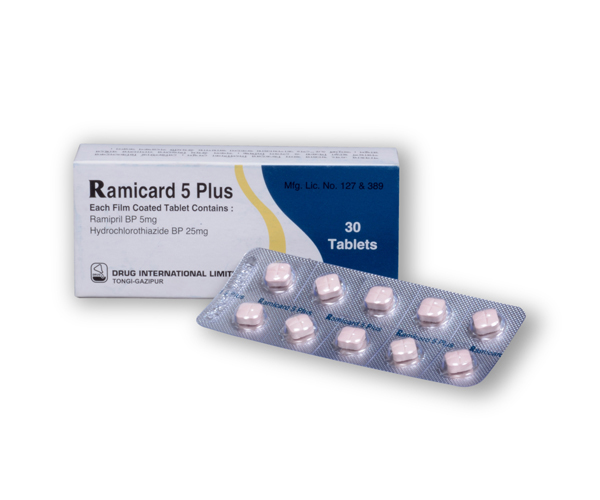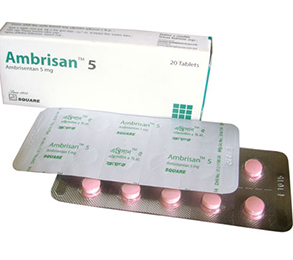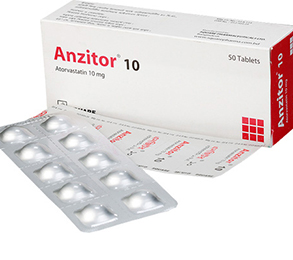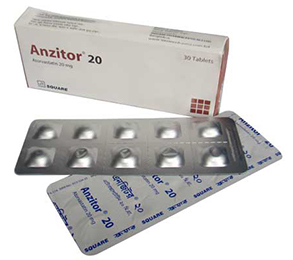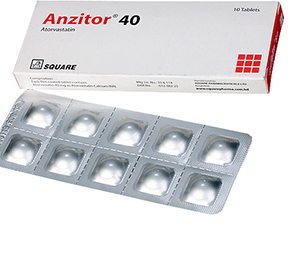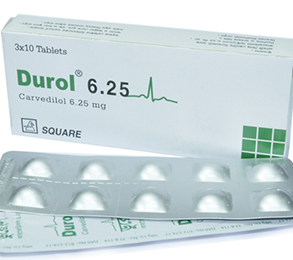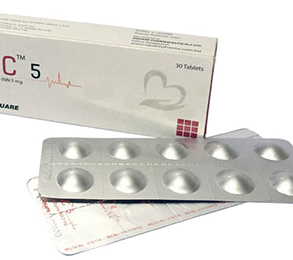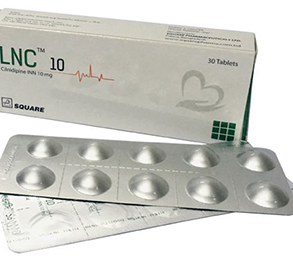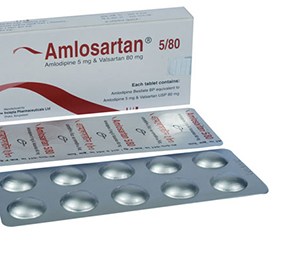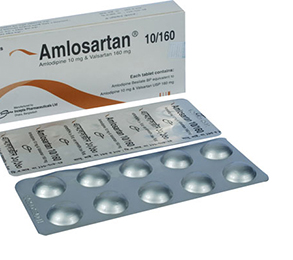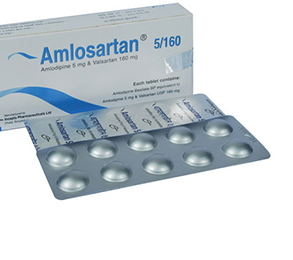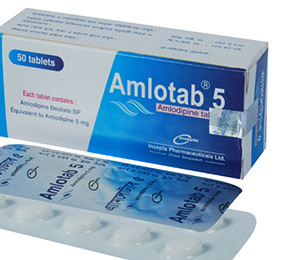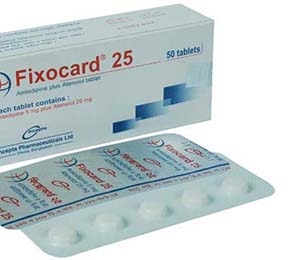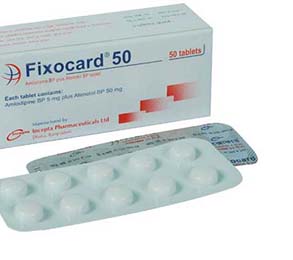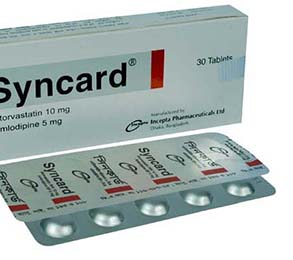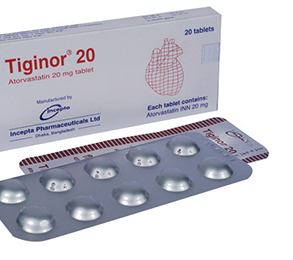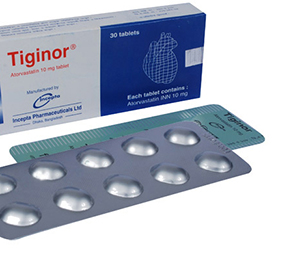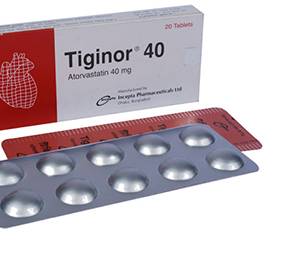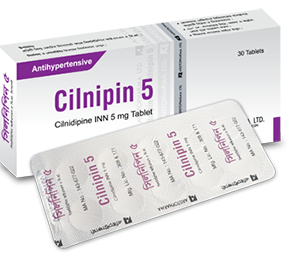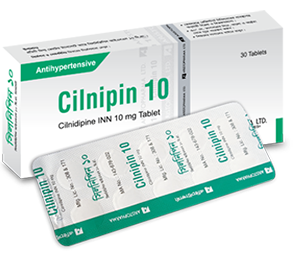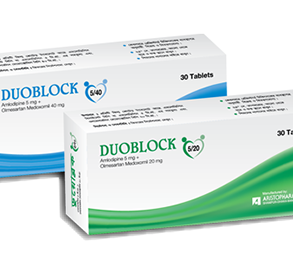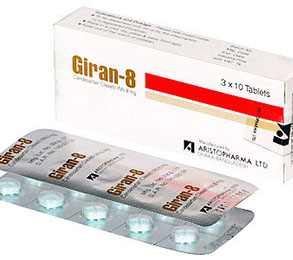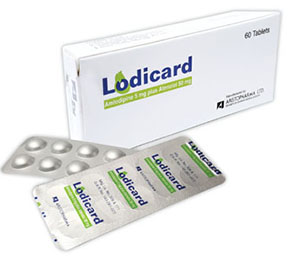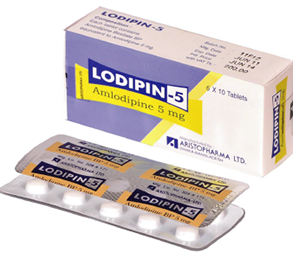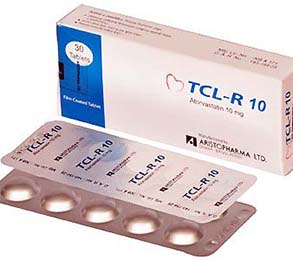Ramicard 5 Plus 10 Pcs
Alternative products
Ramipril + Hydrochlorothiazide
Indications
Indicated for the treatment of mild to moderate hypertension in patients (in whom combination therapy is appropriate) who have been stabilised on the individual components given in the same proportion.
Pharmacology
Ramipril is an angiotensin converting enzyme (ACE) inhibitor, which after hydrolysis to ramiprilat, blocks the conversion of angiotensin I to the vasoconstrictor substance, angiotensin II. So, inhibition of ACE by ramipril results in decreased plasma angiotensin II, which leads to decreased vasopressor activity and decreased aldosterone secretion. Thus ramipril exerts its antihypertensive activity. It is also effective in the management of heart failure and reduction of the risk of stroke, myocardial infarction and death from cardiovascular events. It is long acting and well tolerated; so, can be used in long term therapy.
Hydrochlorothiazide is a thiazide diuretic. Thiazides affect the renal tubular mechanisms of electrolyte reabsorption, directly increasing excretion of sodium and chloride in approximately equivalent amounts. Indirectly, the diuretic action of Hydrochlorothiazide reduces plasma volume, with consequent increases in plasma renin activity, increases in aldosterone secretion, increases in urinary potassium loss, and decreases in serum potassium. The renin-aldosterone link is mediated by angiotensin II, so co-administration of anangiotensin converting enzyme (ACE) inhibitor tends to reverse the potassium loss associated with these diuretics.
Dosage & Administration
Dose Titration Guided by Clinical Effect. A patient whose blood pressure is not adequately controlled with ramipril (or another ACE inhibitor) alone or with hydrochlorothiazide (or another thiazide diuretic) alone may be switched to combination therapy with Ramipril 2.5 mg + Hydrochlorothiazide 12.5 mg or Ramipril 5 mg + Hydrochlorothiazide 25 mg tablet.
Replacement Therapy: For convenience, patients receiving ramipril and hydrochlorothiazide from separate tablets may instead wish to receive tablets of combination of Ramipril 2.5 mg + Hydrochlorothiazide 12.5 mg or Ramipril 5 mg + Hydrochlorothiazide 25 mg. If necessary, the dose may be increased to two tablets of Ramipril 2.5 mg + Hydrochlorothiazide 12.5 mg or Ramipril 5 mg + Hydrochlorothiazide 25 mg once daily.
Maximum daily dose: 10 mg ramipril and 50 mg hydrochlorothiazide (four tablets of Ramipril 2.5 mg + Hydrochlorothiazide 12.5 mg or two tablets of Ramipril 5 mg + Hydrochlorothiazide 25 mg).
* চিকিৎসকের পরামর্শ মোতাবেক ঔষধ সেবন করুন'
Interaction
Combination with diuretics or other antihypertensive agents or nitrates and tricyclic antidepressants may potentiate the antihypertensive response to Ramipril and Hydrochlorothiazide combination. Patients previously treated with diuretics may experience a marked drop in blood pressure. Ramipril / Hydrochlorothiazide may weaken the effectiveness of blood sugar lowering medications (antidiabetic agents, e.g. insulin and sulphonylurea derivatives). When Ramipril/Hydrochlorothiazide is administered simultaneously with acetyl salicylic acid or indomethacin, attenuation of antihypertensive effect and moreover acute renal failure may occur. Ramipril / Hydrochlorothiazide may potentiate the effects of alcohol.
Contraindications
This preparation must not be used in patients with hypersensitivity to ramipril, hydrochlorothiazide or other thiazide diuretics. History of hereditary angioneurotic oedema. Severe impairment of renal function. Haemodynamically relevant unilateral or bilateral renal artery stenosis, mitral stenosis, aortic stenosis, and in patients with low blood pressure (hypotensive patients) or in patients with an unstable circulatory situation (haemodynamically unstable patients) where there might be a risk of life-threatening fall in blood pressure and renal failure. Clinically relevant electrolyte disturbances e.g. hypokalemia, hyponatremia or hypercalcemia which may worsen following treatment.
Side Effects
The combination of Ramipril and Hydrochlorothiazide is generally well tolerated. Side effects commonly reported include headache, dizziness, asthenia, nausea, vomiting, hypotension, cough, weakness, diarrhoea, fever, gastric irritation, pulmonary oedema, photosensitivity, electrolyte imbalance, hyperglycaemia, hyperuricaemia and vertigo.
Pregnancy & Lactation
ACE inhibitors can cause foetal and neonatal morbidity and death when administered to pregnant women. Also, thiazides cross the placental barrier and appear in cord blood. There is a risk of foetal or neonatal jaundice, thrombocytopenia, and possibly other adverse reactions that have occurred in adults. When pregnancy is detected, Ramipril and Hydrochlorothiazide combination should be discontinued as soon as possible. This product is excreted in breast milk. Because of the potential for serious adverse reactions in nursing infants, women receiving Ramipril and Hydrochlorothiazide combination should not breast feed.
Precautions & Warnings
Treatment with Ramipril and Hydrochlorothiazide combination requires regular medical supervision. Generally dehydration, reduced blood volume (hypovolumia) or salt depletion should be corrected before initiating the treatment (in patients with concomitant heart failure, however, this must be carefully weighed against the risk of volume overload).
Special caution is necessary during the treatment of: Patients with severe and particularly with malignant hypertension. Patients with concomitant and particularly with severe heart failure. Patients in whom fluid or salt deficiency exists or may develop (as a result of inadequate fluid or salt intake) or as a result of diarrhoea, vomiting or excessive sweating in cases where salt and fluid replacement is inadequate. Patients with haemodynamically relevant renal artery stenosis. In patients with pre-existing impairment of renal function or in kidney transplant patients. White blood cell count should be monitored (more frequent in the initial phase of the treatment) so that leucopenia can be detected. Insufficient experience has been gained concerning the use of Ramipril and Hydrochlorothiazide combination in children.
Use in Special Populations
Dosage in renal impairment: In patients with a creatinine clearance between 60 and 30 ml/min, treatment should be initiated with Ramipril 1.25 mg monotherapy. If blood pressure is not adequately controlled, the dose of Ramipril may be increased to 2.5 mg. If blood pressure is still not controlled, patient may be switched to one tablet of Ramoril 2.5 Plus once daily. Dosage may be titrated upward to Ramoril 5 Plus until blood pressure is controlled.
Uue in children: Safety and effectiveness in paediatric patients have not been established
Overdose Effects
Ramipril: Limited data on human overdosage are available. The most likely clinical manifestations would be symptoms attributable to hypotension. Because the hypotensive effect of Ramipril is achieved through vasodilation and effective hypovolemia, it is reasonable to treat Ramipril overdosage by infusion of normal saline solution.
Hydrochlorothiazide: The most common signs and symptoms observed are those caused by electrolyte depletion (hypokalemia, hypochloremia, and dehydration resulting from excessive diuresis. If digitalis has also been administered, hypokalemia, may accentuate cardiac arrhythmias. The degree to which Hydrochlorothiazide is removed by hemodialysis has not been established.
Therapeutic Class
Combined antihypertensive preparations
Storage Conditions
Store in a cool and dry place, protected from light.
- Type Tablet
- Tag
- Morbi leo risus
- Porta ac consectetur ac
- Vestibulum at eros
